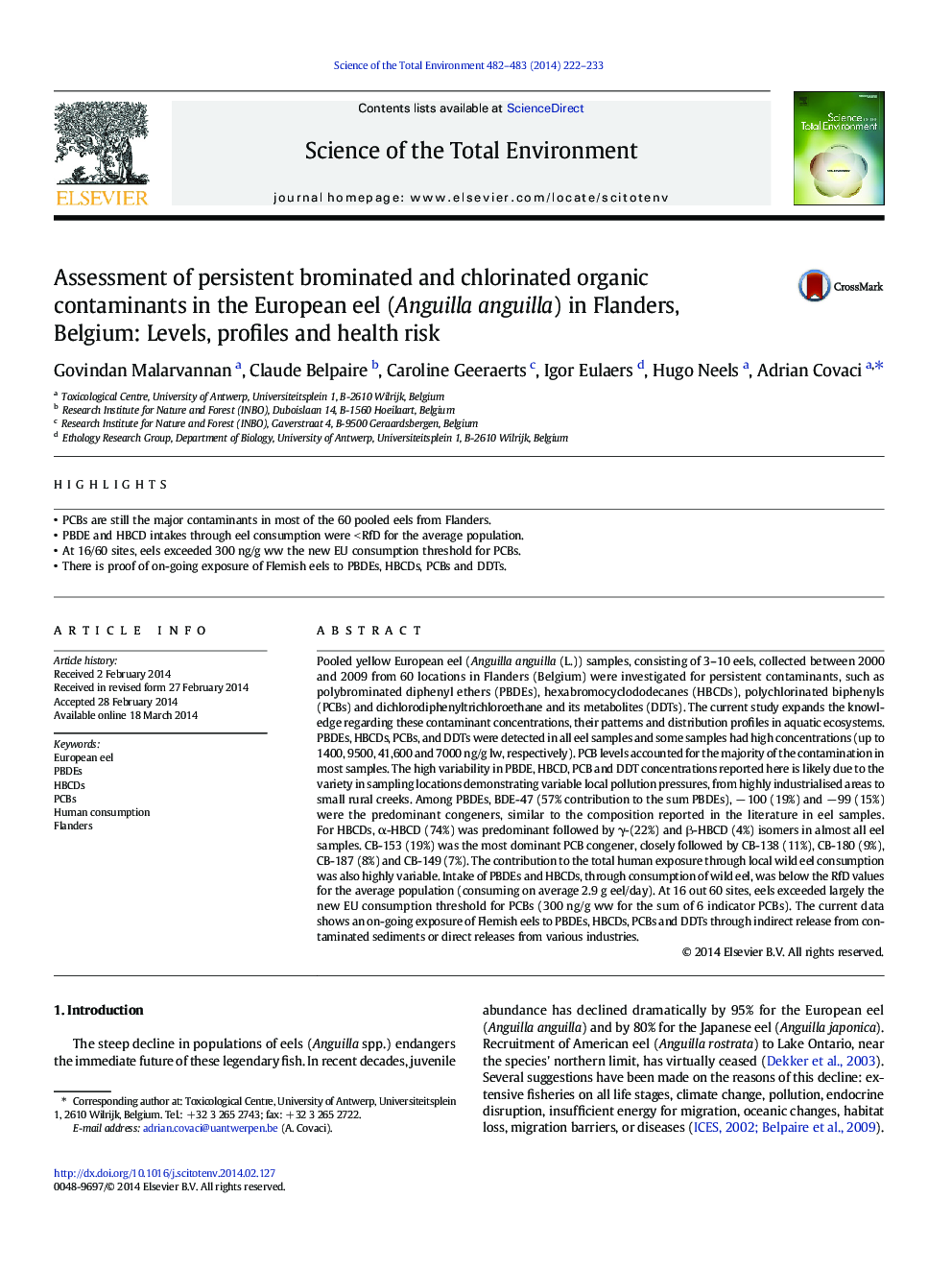| کد مقاله | کد نشریه | سال انتشار | مقاله انگلیسی | نسخه تمام متن |
|---|---|---|---|---|
| 6330724 | 1619785 | 2014 | 12 صفحه PDF | دانلود رایگان |
عنوان انگلیسی مقاله ISI
Assessment of persistent brominated and chlorinated organic contaminants in the European eel (Anguilla anguilla) in Flanders, Belgium: Levels, profiles and health risk
دانلود مقاله + سفارش ترجمه
دانلود مقاله ISI انگلیسی
رایگان برای ایرانیان
کلمات کلیدی
موضوعات مرتبط
علوم زیستی و بیوفناوری
علوم محیط زیست
شیمی زیست محیطی
پیش نمایش صفحه اول مقاله

چکیده انگلیسی
Pooled yellow European eel (Anguilla anguilla (L.)) samples, consisting of 3-10 eels, collected between 2000 and 2009 from 60 locations in Flanders (Belgium) were investigated for persistent contaminants, such as polybrominated diphenyl ethers (PBDEs), hexabromocyclododecanes (HBCDs), polychlorinated biphenyls (PCBs) and dichlorodiphenyltrichloroethane and its metabolites (DDTs). The current study expands the knowledge regarding these contaminant concentrations, their patterns and distribution profiles in aquatic ecosystems. PBDEs, HBCDs, PCBs, and DDTs were detected in all eel samples and some samples had high concentrations (up to 1400, 9500, 41,600 and 7000 ng/g lw, respectively). PCB levels accounted for the majority of the contamination in most samples. The high variability in PBDE, HBCD, PCB and DDT concentrations reported here is likely due to the variety in sampling locations demonstrating variable local pollution pressures, from highly industrialised areas to small rural creeks. Among PBDEs, BDE-47 (57% contribution to the sum PBDEs), â 100 (19%) and â 99 (15%) were the predominant congeners, similar to the composition reported in the literature in eel samples. For HBCDs, α-HBCD (74%) was predominant followed by γ-(22%) and β-HBCD (4%) isomers in almost all eel samples. CB-153 (19%) was the most dominant PCB congener, closely followed by CB-138 (11%), CB-180 (9%), CB-187 (8%) and CB-149 (7%). The contribution to the total human exposure through local wild eel consumption was also highly variable. Intake of PBDEs and HBCDs, through consumption of wild eel, was below the RfD values for the average population (consuming on average 2.9 g eel/day). At 16 out 60 sites, eels exceeded largely the new EU consumption threshold for PCBs (300 ng/g ww for the sum of 6 indicator PCBs). The current data shows an on-going exposure of Flemish eels to PBDEs, HBCDs, PCBs and DDTs through indirect release from contaminated sediments or direct releases from various industries.
ناشر
Database: Elsevier - ScienceDirect (ساینس دایرکت)
Journal: Science of The Total Environment - Volumes 482â483, 1 June 2014, Pages 222-233
Journal: Science of The Total Environment - Volumes 482â483, 1 June 2014, Pages 222-233
نویسندگان
Govindan Malarvannan, Claude Belpaire, Caroline Geeraerts, Igor Eulaers, Hugo Neels, Adrian Covaci,